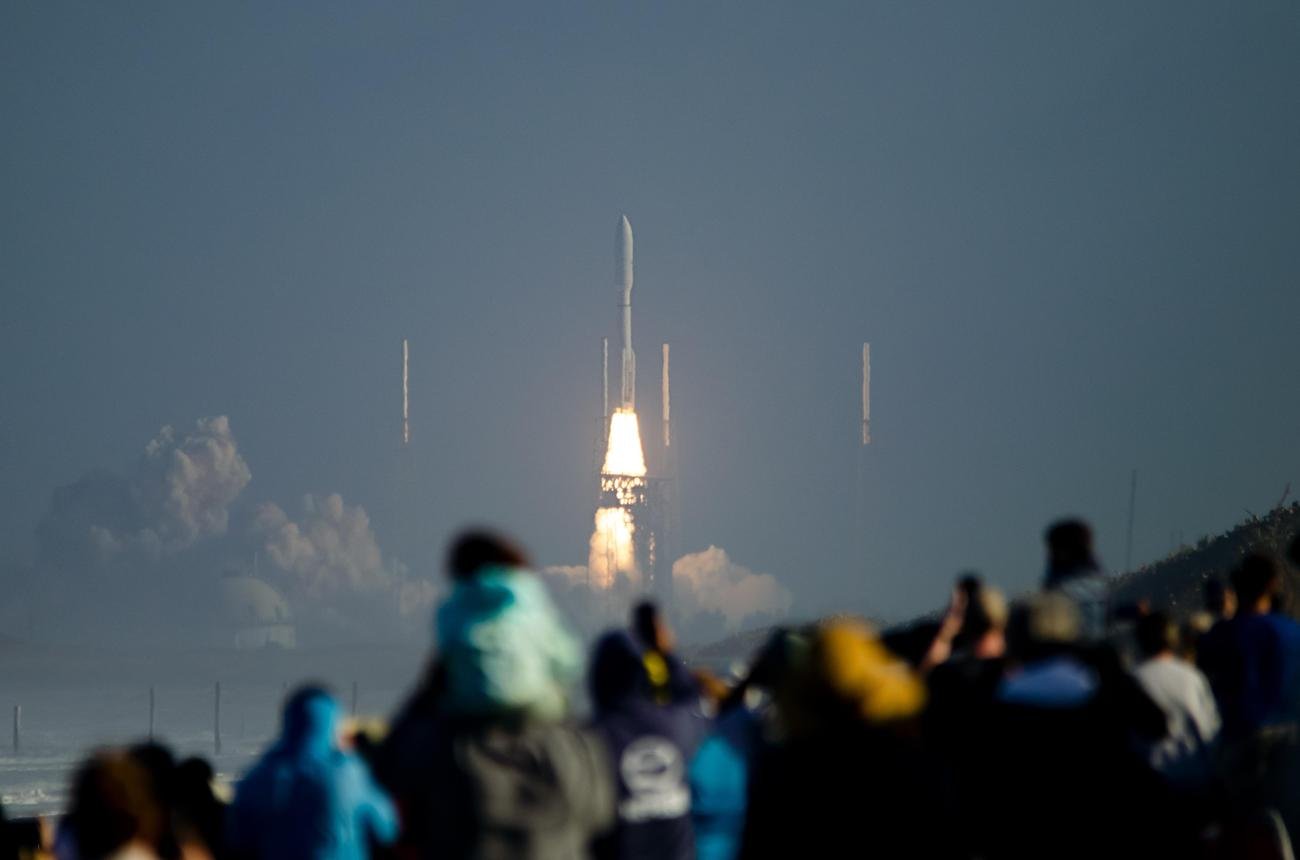Prepare for a breathtaking journey that will take you through the awe-inspiring realm of rocketry, where human innovation reaches for the stars. In this article, we will delve into the captivating world of rockets, uncovering the mesmerizing facts hidden within each stage of their launch. Buckle up as we explore the intricate workings of rocket chambers and unravel the extraordinary tales behind these mighty vessels of space exploration. Get ready to embark on a thrilling adventure as we unveil the marvels of rocketry and the wondrous achievements they have brought to humanity.

Facts about the Rocket
When it comes to space exploration, rockets have played a pivotal role in propelling us beyond the confines of our planet. These incredible machines, born out of scientific ingenuity and human curiosity, have enabled us to reach the moon, send satellites into orbit, and explore the vast expanse of the universe. Let’s delve into some fascinating facts about rockets that will leave you awestruck and inspired.
Rocket Engines: The Thrust Propellers
One of the most fundamental aspects of rockets is their engines. Rocket engines produce thrust by expelling exhaust at high speeds, in turn generating the necessary force to propel the rocket forward. It’s a classic example of Newton’s third law of motion: for every action, there is an equal and opposite reaction. As the exhaust is expelled in one direction, the rocket moves in the opposite direction.
“Rocket engines are the powerhouses behind the celestial ballet of space exploration, harnessing the raw energy of combustion to launch us into the vast unknown.”
How Rockets Overcome Earth’s Gravitational Pull
Have you ever wondered how rockets manage to blast off from the ground, defying the powerful force of Earth’s gravity? The secret lies in the incredible power generated by rocket engines. By producing an exhaust thrust greater than the weight of the vehicle itself, rockets are able to overcome the pull of gravity and soar into the sky.
“With engines roaring and flames blazing, rockets become the ultimate escape artists, defying the grasp of Earth’s gravity and carrying us toward the stars.”
The Need for Speed: Rockets in Record Time
Time is of the essence when it comes to space travel. Rockets have the remarkable ability to reach mind-boggling speeds in a remarkably short timeframe. In as little as eight minutes, a rocket can accelerate to a speed of 15,000 miles per hour. That’s faster than most vehicles on Earth could ever dream of!
“In the blink of an eye, rockets catapult humans and machines alike to velocities that would leave Superman in awe, paving the way for unprecedented achievements in space exploration.”
Rocket Efficiency: Vacuum vs. Atmospheric Pressure
While rockets are born to conquer the vacuum of space, they face quite a different challenge when Earth’s atmosphere comes into play. Rockets work more efficiently in a vacuum, where they encounter minimal air resistance. The loss of thrust due to opposing atmospheric pressure can significantly impact a rocket’s performance. Hence, launching spacecraft from spaceports near the equator, where the atmosphere is thinner, is a common strategy.
“Rockets yearn for the emptiness of space, for it is there they truly thrive, gliding through the void without the burdensome weight of atmospheric resistance.”
From Warfare to Wonder: The Rocket’s Evolution
The word “rocket” carries a rich historical significance, with its origins hailing from the Italian word “Rochette,” meaning “little spindle.” Interestingly, rockets have come a long way from their humble beginnings as weapons. Initially employed in warfare, these powerful projectiles laid the foundation for our journey to the stars. Today, rockets symbolize humanity’s insatiable thirst for exploration and hold the key to unlocking the mysteries of the universe.
“Rockets have transformed from instruments of destruction to vehicles of discovery, embodying our endless quest to push the boundaries of human knowledge and imagination.”
Rocketry at Home: Exploring DIY Dreams
Did you know that you can actually create and launch a rocket from the comfort of your own home? While it may not carry humans or satellites into space, building a small-scale rocket can be an exciting and educational experience. Amateur rocketry enthusiasts have been designing and launching their own rockets for decades, fostering a deep admiration for the science and engineering behind these incredible machines.
“Unleash your inner rocket scientist and embark on a DIY adventure, exploring the marvels of rocketry right in your own backyard. Who knows where your homemade rocket might take you?”
As we uncover the fascinating facts about rockets, we can’t help but marvel at the indomitable spirit of human innovation and exploration. These machines, propelled by the force of human ingenuity, have lit up the skies with their fiery engines and carried us closer to the stars. From defying gravity to reaching unimaginable speeds, rockets have ushered us into an era of extraordinary achievements in space exploration.
So, the next time you gaze up at the night sky, ponder the wonders of rocketry that have shaped our understanding of the universe and continue to pave the way for future discoveries.
“Rockets, the majestic emissaries of the cosmos, remind us of our boundless potential to soar to new heights and leave a lasting mark on the vast tapestry of space.”
A rocket engine is a powerful and fascinating piece of technology. But did you know that the Rocket Steam Engine played a crucial role in the advent of space travel? Discover mind-boggling facts about the Rocket Steam Engine that will leave you astounded. From its ingenious design to its impressive propulsion capabilities, this article dives deep into the inner workings of this groundbreaking engine. Learn more about the Rocket Steam Engine by clicking here – facts about the rocket steam engine.
Speaking of rockets, have you ever wondered about the incredible Rocket Chamber? It is a vital component of rocket engines and understanding its secrets is key to understanding space exploration. Discover intriguing facts about the Rocket Chamber that will blow your mind. Unleash your curiosity and click here – facts about the rocket chamber.
Embark on a journey to explore the awe-inspiring Rocket Ship! Rocket ships have propelled humans into space and have been instrumental in major scientific discoveries. Uncover impressive facts about the Rocket Ship that will ignite your imagination. Prepare for liftoff by clicking here – facts about the rocket ship.
The Saturn V Rocket is an icon in space exploration. This colossal machine defied gravity and carried humans to the moon. Dive into the extraordinary facts about the Saturn V Rocket and discover the incredible accomplishments it enabled. Uncover the secrets of this engineering marvel by clicking here – facts about the Saturn V Rocket.
Have you heard about the Artemis Rocket? This state-of-the-art spacecraft is at the forefront of NASA’s plans for future lunar missions. Explore fascinating facts about the Artemis Rocket and uncover how it will propel us towards a new era of exploration. Take flight and click here – facts about the Artemis Rocket.
Rockets Launch in Three Stages
Rocket launches are truly a marvel of human achievement, but have you ever wondered how these incredible machines work? Strap in as we dive into the captivating world of rocketry and explore the fascinating facts surrounding the three-stage launch process.
Stage 1: Lifting Off with Power
To kick off our cosmic journey, the first stage of a rocket takes center stage. This powerhouse provides the initial thrust needed to overcome Earth’s gravity and launch the rocket skyward. Picture a sprinter exploding off the starting line, propelling themselves forward with a burst of energy. In a similar fashion, the first stage propels the rocket into the vast expanse of space.
In the quest for the stars, a rocket’s first stage ignites the dreams of exploration and discovery.
Stage 2: Navigating the Skies
As the rocket hurtles skyward, a seamless transition occurs as it soars into the second stage of the launch sequence. The second stage continues the momentum generated by the first stage, allowing the rocket to venture deeper into the cosmos. This critical stage provides the additional propulsion necessary to ascend even higher into orbit.
Like a skilled pilot guiding an aircraft through the skies, the second stage expertly steers the rocket towards the realms of space exploration.
Stage 3: Achieving Orbital Perfection
As we ascend further into the intricacies of rocketry, the remarkable importance of the final stage emerges. The third stage refines the rocket’s speed and finely tunes its trajectory to ensure it reaches the desired orbit or trajectory. Similar to a precision instrument intricately calibrated for a specific task, the third stage is the key to achieving orbital perfection.
Just as an artist adds the final brushstroke to a masterpiece, the third stage adds the finishing touch to a rocket’s journey to the stars.
Within this three-stage launch system, each stage builds upon the achievements of its predecessors, working harmoniously to propel the rocket towards its final destination. This sequential propulsion allows rockets to overcome the limitations imposed by physics and reach the staggering speeds required for space exploration.
Three stages, one goal: to conquer the cosmos and unlock the mysteries of the universe.
| Stage | Function |
|---|---|
| First | Provides initial thrust to break free of Earth’s gravity |
| Second | Continues momentum and ascent into deeper space |
| Third | Fine-tunes speed and trajectory for achieving desired orbit |
In this grand cosmic ballet, rockets elegantly dance through each stage, driven by the pursuit of knowledge and the desire to explore the unknown. Just as pioneers once set sail to uncharted lands, rockets now embark on a voyage through the vastness of space, carrying with them the hopes and dreams of humanity.
So, the next time you witness a rocket launch, take a moment to appreciate the intricate choreography of its three-stage journey. For within the fiery roar and billowing smoke lies a testament to human ingenuity, as we continue to push the boundaries of what is possible and unravel the secrets of the universe.
Let rockets be our guide on this celestial dance, as we marvel at humanity’s relentless quest for the stars.
Facts About the Rocket Chamber
The rocket chamber is the heart and soul of a rocket engine. It’s where the magic happens, where fuel and oxidizer mix and ignite to produce the tremendous thrust needed to propel a rocket into space. Let’s delve into the intricate details of the rocket chamber and uncover some fascinating facts!
- Combustion Chamber: The Fiery Core
The combustion chamber is the central component of a rocket engine. This is where the fuel and oxidizer come together in a fiery embrace, creating a controlled explosion that generates an incredible amount of thrust. Think of it as the blazing heart of the rocket, where the chemistry of propulsion unfolds.
“The combustion chamber is where the fiery dance of fuel and oxidizer takes place, releasing immense energy and propelling the rocket skyward.”
- Complex Maze of Pipes: The Liquid-Fueled Rocket
Liquid-fueled rockets have propellant tanks connected to the combustion chamber through a maze of intricate pipes. This network of plumbing helps regulate the flow of propellant, ensuring the right mixture reaches the combustion chamber at the right time. It’s like a complex circulatory system, delivering the lifeblood of the rocket to where it’s needed most.
“In liquid-fueled rockets, a web of pipes connects the propellant tanks to the combustion chamber, channeling the vital fuel and oxidizer for the explosive encounter that powers the rocket’s ascent.”
- Precision Mixing: Liquid-Fueled and Hybrid Rockets
Both liquid-fueled and hybrid rockets involve a delicate dance of propellants in the combustion chamber. In liquid-fueled rockets, the fuel and oxidizer are forced together to mix and burn, producing a controlled explosion. Hybrid rockets, on the other hand, combine solid and liquid or gaseous propellants, inviting a harmonious blend of materials to unleash the rocket’s power.
“In the combustion chamber, liquid-fueled rockets and hybrid rockets orchestrate a ballet of propellants, leading to a symphony of controlled explosions that launch rockets into the cosmos.”
- The Art of Injection: The Importance of Injectors
Both liquid and hybrid rockets rely on injectors to introduce propellant into the combustion chamber. These nozzles play a crucial role in ensuring the steady flow and proper mixing of the propellants. Imagine them as the maestros, precisely directing the flow of propellant to unleash its potential.
“Injectors, like expert conductors, control the precise entry of propellant into the combustion chamber, where their harmonious arrangement and mixing ignite the dazzling fire that propels rockets to the heavens.”
Let’s summarize the remarkable facts we’ve uncovered about the rocket chamber:
- The combustion chamber is the fiery core where fuel and oxidizer mix and ignite to produce thrust.
- Liquid-fueled rockets rely on a complex network of pipes to deliver propellant to the combustion chamber.
- Both liquid-fueled and hybrid rockets require precise mixing of fuel and oxidizer in the combustion chamber.
- Injectors play a vital role in controlling the flow and mixing of propellants in the combustion chamber.
These fascinating facts about the rocket chamber illuminate the incredible engineering and science behind rocketry, unveiling the marvels of space exploration. So next time you gaze at a rocket ready for liftoff, remember the power that lies within its magnificent rocket chamber!
How Do Rockets Fly: Understanding Rocket Science Explained
[youtube v=”9g0FehS0H1E”]
Introduction
Rocket science may seem like a daunting and complex field, but in reality, it follows the fundamental laws of physics. In this article, we will explore the inner workings of rockets and how they are able to overcome the challenges of Earth’s gravity to launch into space. By understanding these principles, we can gain a deeper appreciation for the science and engineering behind these incredible vehicles of exploration and discovery.
Newton’s Laws of Motion
Rockets, like all objects, are governed by Newton’s laws of motion. The first law states that an object at rest will remain at rest until an external force is applied to it. This means that when a rocket is on the launch pad, it will remain stationary until a force is exerted on it. Once the rocket is in motion, it will continue on its path unless acted upon by another force.
Newton’s second law tells us that the heavier an object is, the more force is required to set it into motion. This principle applies to rockets as well. A smaller, lighter rocket requires less fuel to propel it, while a heavier rocket needs more fuel to overcome inertia and achieve liftoff.
Newton’s Third Law and Jet Propulsion
Newton’s third law of motion plays a crucial role in rocket propulsion. It states that for every action, there is an equal and opposite reaction. In the case of a rocket, burning fuel creates a push on the front of the rocket, propelling it forward. At the same time, an equal and opposite force is exerted on the exhaust gas, pushing it backward.
Jet propulsion is the key to launching a rocket upward at high speeds. The fuel, also known as propellant, can be either solid or liquid and is stored inside the fuel chamber of the rocket. When ignited, the propellant mixes with oxygen gas and creates hot gas that shoots out from the other end, producing thrust. This thrust pushes the rocket upward, generating a tremendous amount of momentum.
“The third law says that every action has an equal and opposite reaction. In a rocket, burning fuel creates a push on the front of the rocket, launching it forward. This creates an equal and opposite force on the exhaust gas, propelling it backward.”
Stages of Rocket Launch
Sometimes, the initial thrust produced by the rocket’s engines may not be enough to lift it off the ground. In such cases, rockets are launched in stages to achieve the desired altitude and velocity.
The first stage of a rocket usually involves solid propellant boosters that provide the initial thrust needed to overcome Earth’s gravity. These boosters can propel the rocket up to speeds of 28,000 kilometers per hour, far into space. Once the solid propellant boosters are depleted, they are detached from the rocket.
“The first stage of the rocket carries the responsibility of lifting the rocket and its contents. It can propel the rocket up to speeds of 28,000 kilometers per hour, after which it is detached.”
The second stage continues the momentum generated by the first stage and allows the rocket to venture deeper into space. It may use a different type of engine, such as a liquid-fueled engine, to provide the necessary thrust.
Finally, the third stage fine-tunes the rocket’s speed and trajectory to achieve the desired orbit. This stage is crucial in placing the rocket and its payload in the correct position in space.
“The second stage continues the momentum generated by the first stage and propels the rocket deeper into space. The third stage ensures precise positioning of the rocket and its payload.”
The Quest for the Stars
Rockets have come a long way since their invention in China around 1180. Originally used as weapons and fireworks, rockets have evolved into sophisticated vehicles of exploration and scientific discovery.
“The word ‘rocket’ originated from the Italian word ‘Rochette’ and has transitioned from being used as weapons to becoming vehicles of exploration and discovery.”
Their ability to overcome Earth’s gravity and travel at incredible speeds has allowed us to advance our understanding of the universe and make groundbreaking discoveries in space exploration.
“Rockets have played a crucial role in advancing our knowledge of the universe and will continue to pave the way for future discoveries in space exploration.”
Conclusion
Rocket science may not be as intimidating as it sounds. By understanding the principles of Newton’s laws of motion, jet propulsion, and the stages of rocket launch, we can appreciate the complexity and engineering behind these incredible machines. Rockets are driven by our desire to explore the unknown and push the boundaries of human knowledge. With each launch, we inch closer to a brighter future and a deeper understanding of our universe.
“Rocket launches are a testament to human ingenuity and our relentless quest for the stars.”
FAQ
Q: How many stages do rockets require?
A: Rockets require multiple stages due to the limitations imposed by the laws of physics on maximum achievable velocity based on the rocket’s fueled-to-dry mass ratio.
Q: What is the purpose of a third stage in a rocket launch?
A: The use of a third stage allows for fine-tuning of speed and positioning the craft in the desired orbit or trajectory.
Q: Do rockets always require a third stage to reach orbit?
A: Depending on the specific rocket, the second stage may be sufficient to reach orbit, or a third or fourth stage may be needed to deliver the payload to space.
Q: How does the ideal nozzle shape for rockets vary with altitude?
A: The ideal nozzle shape for rockets varies with altitude due to changes in air pressure.
Q: How do rockets work in the vacuum of space?
A: Rockets work by taking advantage of momentum, rather than pushing against the air, even in the vacuum of space.
- Senior at What Age: Benefits & Eligibility Guide - March 29, 2025
- Unlocking Senior Benefits: How Old is a Senior? Your Complete Guide - March 29, 2025
- Master Russian Politeness:A Guide to Saying Please - March 29, 2025
















